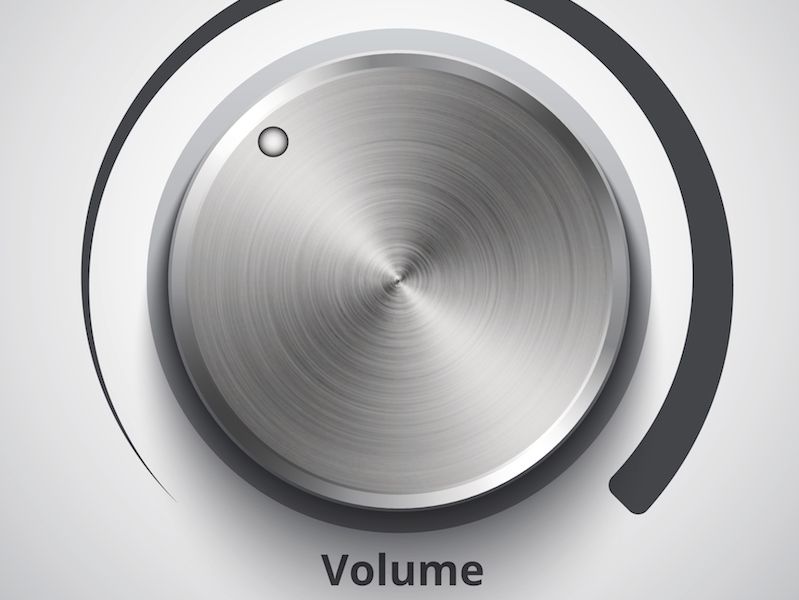
Have you ever gone to the beach and noticed one of those “Beware of Shark” warnings? It’s easy to understand that you shouldn’t dismiss a caution like that. A sign like that (specifically if written in big, red letters) may even make you rethink your swim altogether. Inexplicably, though, it’s harder for people to pay attention to warnings concerning their hearing in the same way.
Recent research has found that millions of individuals disregard warning signs when it comes to their hearing (there’s little doubt that this is a global problem, though this research was exclusively conducted in the UK). Knowledge is a big part of the problem. It’s rather instinctive to be scared of sharks. But most people don’t have an overt fear of loud noises. And how do you know how loud is too loud?
We’re Surrounded by Dangerously Loud Sounds
It’s not only the machine shop floor or rock concert that present dangers to your ears (although both of those venues are, without a doubt, harmful to your hearing). There are potential dangers with many every-day sounds. That’s because the duration of sound is as hazardous as the volume. Even lower-level noises, including dense city traffic, can be damaging to your ears if you are exposed for more than two hours.
Generally speaking, here’s an approximate outline of when loud becomes too loud:
- 30 dB: Normal conversation would be at this volume level. At this level, there won’t be a limit to how long you can confidently be exposed.
- 80 – 85 dB: An air conditioner, dense traffic, and a lawnmower are at this volume. This level of sound will usually become harmful after two hours of exposure.
- 90 – 95 dB: Think of the noisiness of a motorcycle. This level of exposure becomes harmful in as little as 50 minutes of exposure.
- 100 dB: An approaching subway train or a mid-sized sporting event are at this sound level (depending on the city, of course). 15 minutes of exposure will be enough to be dangerous at this volume.
- 110 dB: Have you ever turned your Spotify music up to ten? That’s usually around this sound level on most smartphones. This level of exposure becomes dangerous after only 5 minutes of exposure.
- 120 dB and over: Anything over 120 dB (think loud rock concerts or extremely large sporting events) can produce instant damage and pain in your ears.
How Loud is 85 Decibels?
Generally, you should consider anything 85 dB or above as putting your ears in danger. The issue is that it’s not always obvious just how loud 85 dB is. It’s not tangible the way that a shark is tangible.
And that’s one reason why hearing warnings frequently go neglected, specifically when the sound environment isn’t loud enough to cause pain. Here are a couple of potential solutions:
- Get an app: There isn’t an app that will directly protect your ears. But there are several sound level metering apps. It’s difficult to determine what 85 dB feels like so your hearing can be damaged without you even realizing it. The solution, then, is to have this app working and track the sound levels around you. This will help you establish a sense for when you’re going into the “danger zone” (and you will also discern right away when things are getting too noisy).
- Sufficient training and signage: This particularly pertains to workspaces. The significant dangers of hearing loss can be reinforced by training and sufficient signage (and the benefits of protecting your hearing). In addition, just how loud your workplace is, can be clarified by signage. Helping employees know when hearing protection is suggested or required with proper training can be very helpful.
When in Doubt: Protect
Apps and signage aren’t a foolproof solution. So make the effort to safeguard your ears if you are in doubt. Over a long enough duration, noise damage will almost certainly create hearing problems. And these days, it’s never been easier to damage your ears (all you have to do is turn your headphone volume up a little too loud).
You shouldn’t raise the volume past half way, particularly if you’re listening all day. If you keep cranking it up to hear your music over background noise you should find different headphones that can block out noise.
That’s the reason why it’s more important than ever to recognize when loud becomes too loud. Increasing your own knowledge and awareness is the key if you want to do that. Safeguarding your ears, wearing earplugs, earmuffs, or reducing your exposure, is pretty simple. That begins with a little recognition of when you should do it.
These days that should also be easier. Especially now that you know what to be aware of.
Schedule a hearing exam today if you think you may be suffering from hearing loss.
